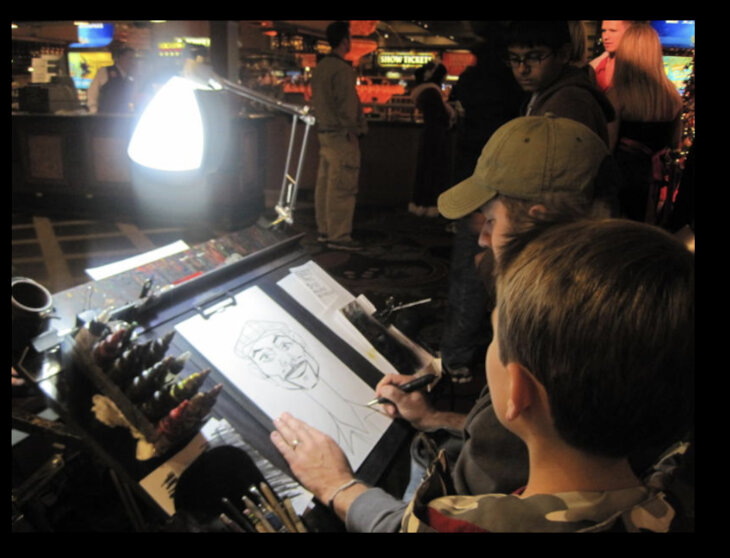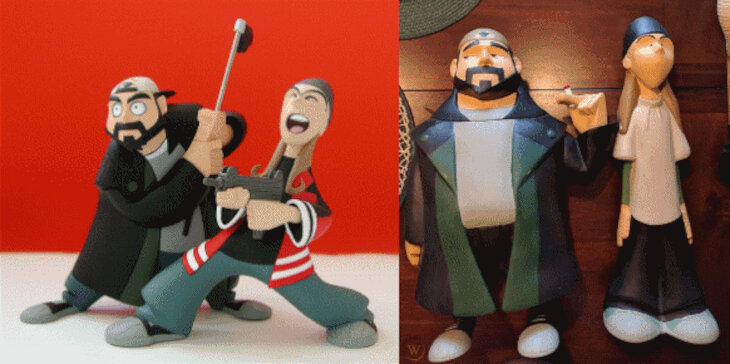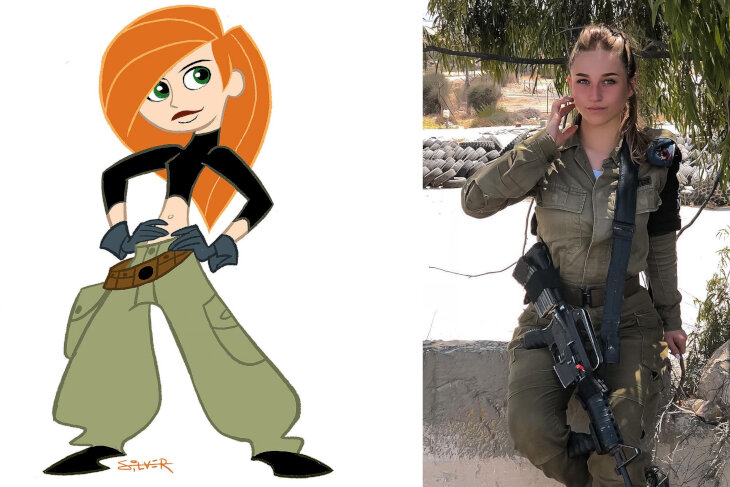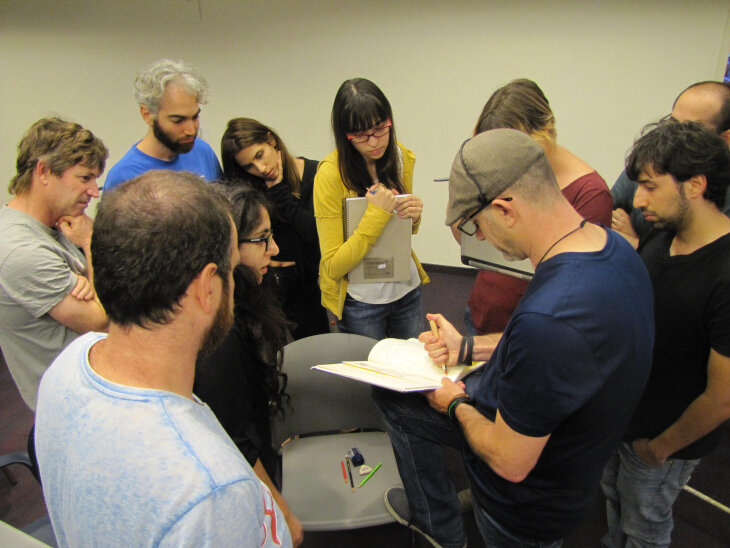 Passover’s Message of Hope in the Aftermath of Oct. 7
Passover’s Message of Hope in the Aftermath of Oct. 7
6 min read
Stephen Silver is using his creative gifts to fulfill his dreams and help others.
Stephen Silver, a lead character designer, has created characters of shows like Hysteria, Kim Possible, Danny Phantom and many of the most iconic cartoon characters in TV history. He is also the author of the character design handbook “The Silver Way” and host of the show Art Talk.
Silver’s artistic journey began at 6 years old when he mysteriously uncovered an artist’s sketchbook that was just laying in his backyard. Stephen would draw and replicate the art he found in this book.
Born and raised in London to Jeanne and John Silver, Stephen is one of 5 siblings. He and his family were very much involved in the Jewish community. At age 10, the family moved to San Diego, California to provide more opportunities and a better life for their children. In San Diego, coming into contact with other Jews was a rarity.
Throughout elementary and high school, there were no Jews in his class and the non-Jews were vehemently antisemitic and bullying. From that point onwards, Stephen decided to no longer identify as Jewish and hid this Jewishness from his peers.
His parents were always very encouraging and supportive of their son’s passion in art. Like most proud Jewish parents, they firmly hoped Stephen would fulfill what he refers to as the 11th commandment: “Thou Shalt go to College”. As a graduation present from high school, his parents took him to Las Vegas for a stay at the Excalibur hotel casino where Stephen discovered a group of caricature artists. Stephen spent the entirety of the trip observing these artists caricature various kinds of people. He convinced them to sell him their caricature learning manual for $7.
 The artist’s sketchbook found in Stephen’s backyard
The artist’s sketchbook found in Stephen’s backyard
To make his parents happy, Stephen attended Palomar junior college which had a very small art program. Throughout his life, he could never pay attention in a classroom setting for anything longer than a few moments. “The only thing in life which truly held my attention,” Stephen said, “was when I’d grab a pencil and paper. I’d shut everything out and feel these powerful creative juices flowing. I felt like I was tapping into something that was beyond myself.”
It was obvious to Stephen that school and him did not mix so he dropped out of college, a decision that did not rest well with his parents. They explained to Stephen, in a loving way, “If you drop out of school, we will always love you, but we will no longer financially support you.”
Stephen took on that challenge and moved out of the house. “I never looked at failure as something I identified with. Failure was always a stepping stone to something else. I had no Plan B. From this point on, I was going to be an artist. My mum says I had chutzpah.”
The first job he got was at Sea World drawing caricatures. This eventually led him to doing private parties, bar/bat mitzvahs, live events, and through networking he landed a job as a t-shirt designer with the NO FEAR clothing company made popular in the ‘90s.
 The early days of Stephen’s caricature work
The early days of Stephen’s caricature work
The boom of the animation industry in 1996 was largely credited to the success of Disney’s The Lion King. Shortly thereafter, Stephen applied to work as a character designer for Disney. In those pre-Internet days, he put together a physical portfolio and drove it personally to an artist he had met at a cartoonist meeting in San Diego who was working at Warner Brothers Television Animation. The artist was so impressed with Stephen’s work he brought his portfolio to the director Bob Doucette of the show Hysteria. He ended up hiring Stephen.
After Hysteria ended, Stephen applied to Disney Television Animation for the animated series Clerks with Kevin Smith. Stephen was given the job. Stephen also got a call about an opportunity to work with Warner Brothers Television Animation – it was like a chance to play in the major leagues of baseball.
Stephen was torn. In the end he decided to delay his dream to work on a Warner Brothers Feature Animation and to remain loyal to Clerks and finish what he started.
 Toys designed by Stephen Silver and Kevin Smith.
Toys designed by Stephen Silver and Kevin Smith.
Chris Bailey, the director of Clerks, remembered Stephen’s loyalty, offering him a role in a new up and coming animated show from Disney starring a female protagonist which would eventually become Kim Possible. They gave him the brief for the main character, Kim, asking him to predict a clothing style of the future.
Stephen remembered the unique style in Israeli clothing that had this almost timeless feel to it which he had seen on his first trip to Israel in 1995. The design of the uniform for female IDF soldiers had this sense of confidence, valor, gracefulness and simplicity that would later be a perfect inspiration for Kim Possible.
 Kim Possible
Kim Possible
Landing in Israel for that first time, Stephen felt a spiritual connection that he can’t even describe, “It’s as if I was coming home to my people. Something in me lay dormant for what seemed like forever, suddenly awoke with a vigor instilling me with this great pride of being Jewish.”
After a stay in a kibbutz for a month, he and his older brother ventured towards the streets and sites in Jerusalem. A friendly Chabad Rabbi they encountered invited them to a Shabbat dinner at the home of one of Jerusalem’s leading rabbinical figures at the time. Stephen recalls that Shabbat experience as being filled with amazing food, joyful singing, words of Torah interlaced with deep philosophical discussions.
Reflecting upon this, he was able to define being Jewish for him as the feeling of being connected to other Jews and that all Jews, no matter their differences, are all part of one family. This feeling added a new dimension to his feeling connected to the many Jewish artists he admired growing up: Jack Kirby, Al Herschfeld, Mort Drucker, Joe Shuster, and Joe Kubert.
With his feelings of embarrassment in being Jewish dissipating, Stephen began to proudly identify as a Jew. He married a Jewish woman and together they are instilling Jewish pride in his kids.
After Stephen’s career flourished working on several big name projects with major studios such as Cloudy with a Chance of Meatballs, The Penguins of Madagascar, Scooby-Doo! And SpongeBob SquarePants, an animation academy in Burbank reached out to Stephen asking if he would like to teach a class on character design. He was skeptical about teaching, but Stephen gave it a shot and discovered that his challenges in learning his craft gave him the know-how to teach others. He eventually developed his curriculum into the book, “The Silver Way”.
 Stephen in Israel doing workshops for aspiring Israeli artists
Stephen in Israel doing workshops for aspiring Israeli artists
Stephen says, “I was given these divine tools to build my house, so to speak. Now that I‘ve built my house – my career, my family, the things I wanted to accomplish – I feel it’s my responsibility to pass these tools onto other people so they can build their own houses and realize their dreams.”
Visit Stephen’s website at SilverdrawingAcademy.com
